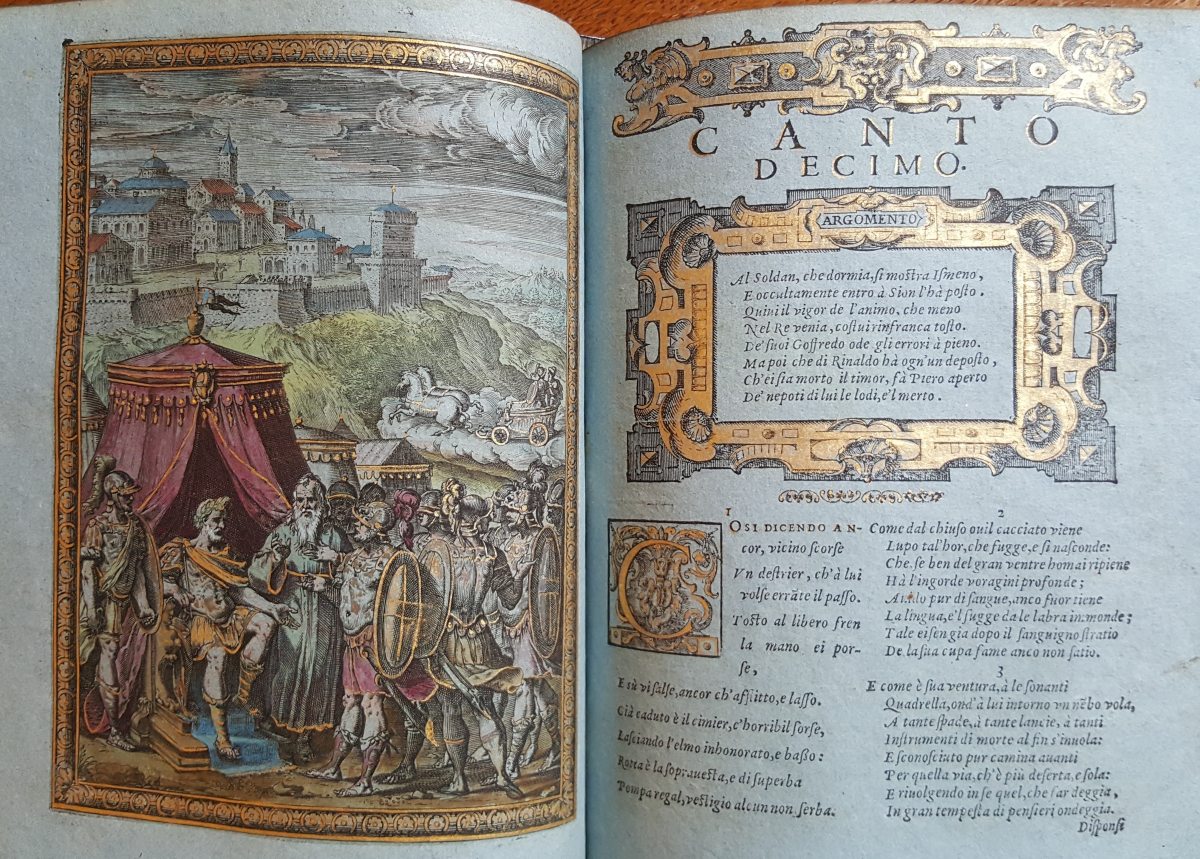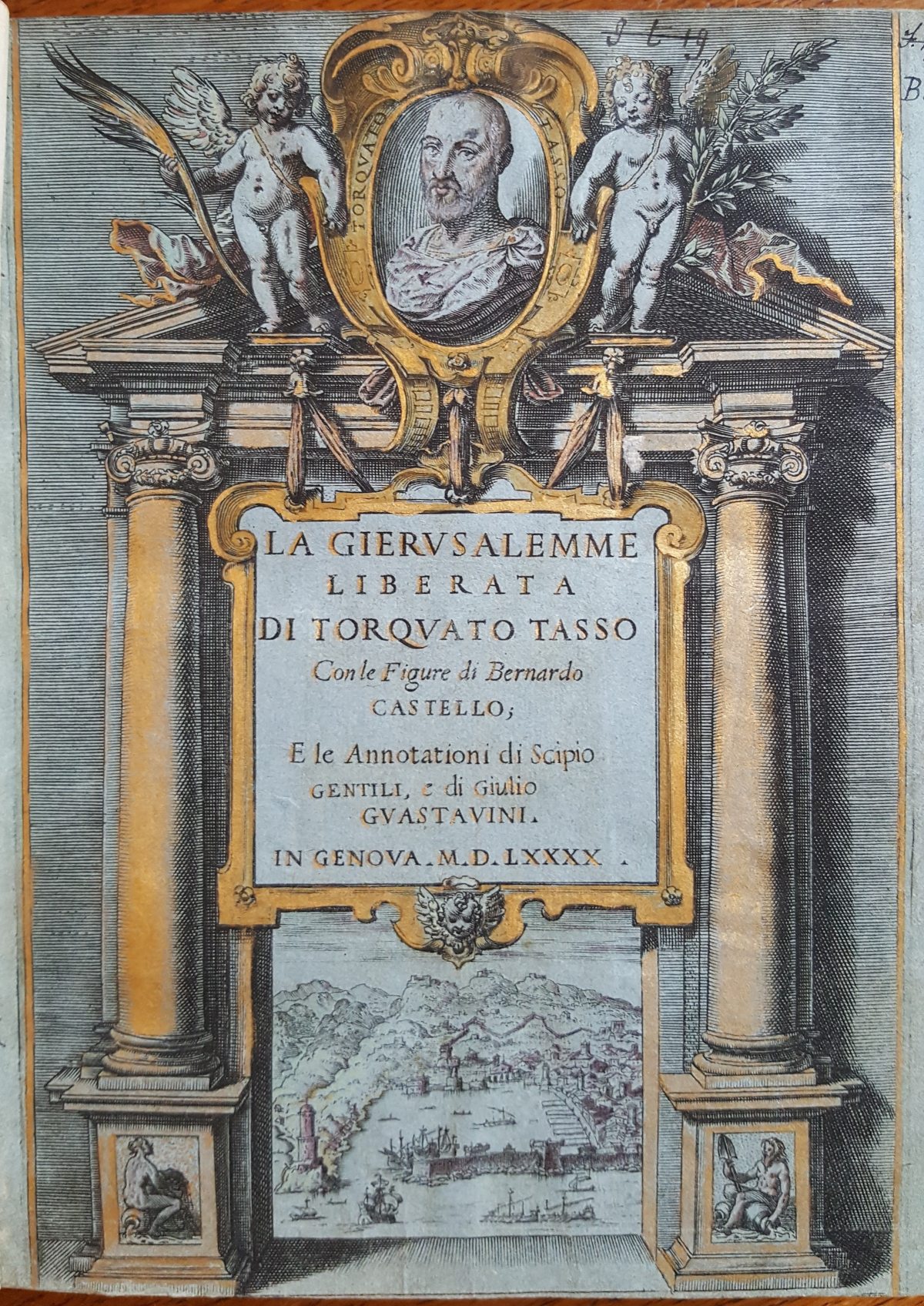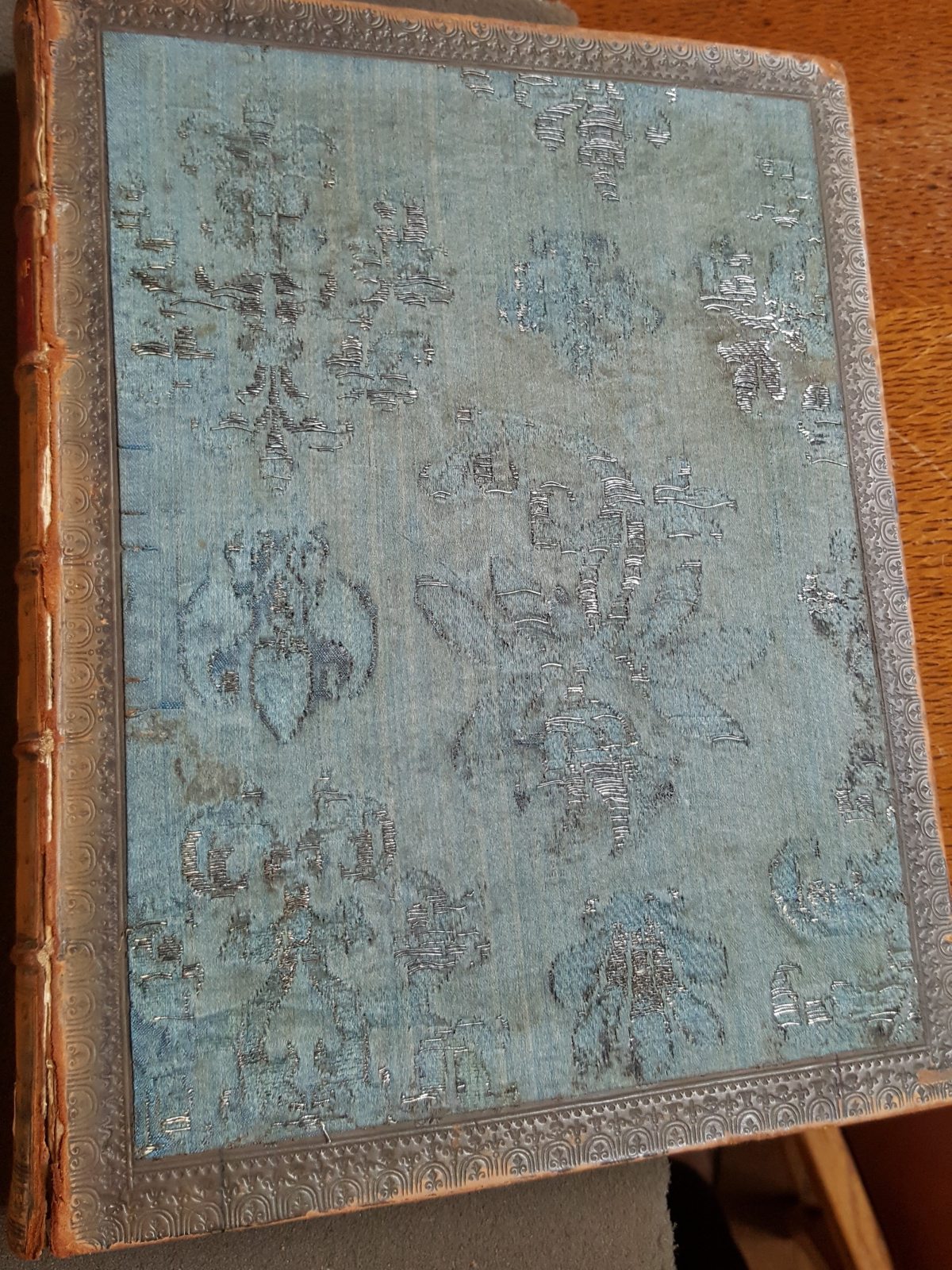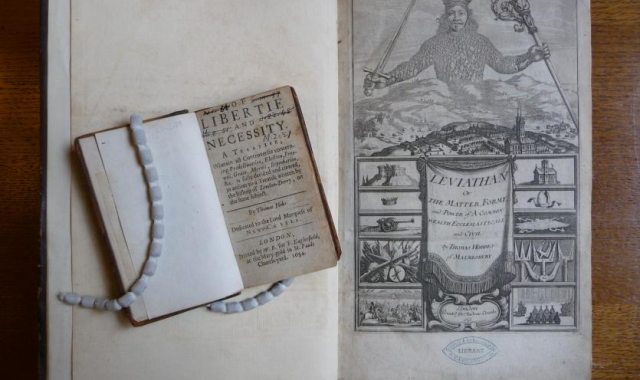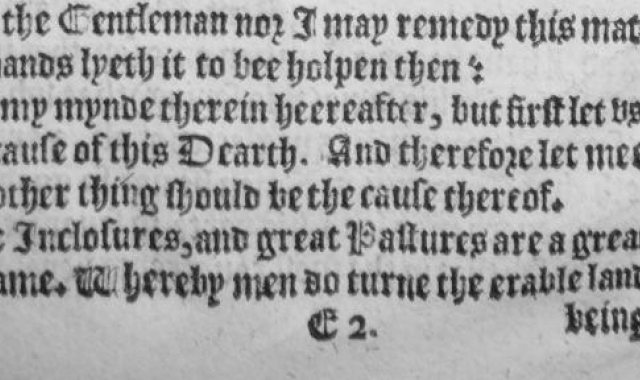Tragic poet
La Gierusalemme liberata (Jerusalem delivered), by Torquato Tasso. Printed in Genoa by Girolamo Bartoli, 1590.
Lower Library, Bb.1.22

La Gierusalemme liberata is an epic poem in ottava rima (eight line stanzas) by Torquato Tasso (1544–1595), a celebrated Renaissance author who, with the exception of Ludovico Ariosto, is considered Italy's greatest poet of the period. The importance and originality of this work rests on its being an ambitious attempt to combine the medieval romance genre with the classical style, as expounded by Homer and Virgil, to recount an historical event (the siege of Jerusalem in 1099, which brought to a conclusion the confrontation between Christians and Muslims during the First Crusade), while interspersing the narrative with fantastical and imagined characters and events.
Tasso's life was a tormented one, punctuated, in its final decades, by episodes of mental illness, which led to his being incarcerated in an asylum for seven years between 1579 and 1586. Persistent doubts as to the worth of the Liberata (as the poem is also known) appear to have contributed to his breakdown. In fact, having completed his magnum opus in 1575, Tasso decided not to publish it immediately but to submit it first to a number of contemporary men of letters for criticism: one of his main concerns was that the work might be heretical. However, the process did little to dispel his doubts; on the contrary, it only fuelled his incipient paranoia. He spent much of the 1580s revising the work, eventually publishing it in 1593 as La Gerusalemme conquistata (Jerusalem conquered). Ironically, this, the only version authorised for publication by the author himself, was badly received at the time and has always been considered inferior to the original oeuvre.
Until the twentieth century the Liberata was held in very high regard throughout Europe and its influence considerable, as references to it can be found, amongst others, in various passages of The Faerie Queene by Spenser and Milton's Paradise Lost. Its narrative and characters provided the inspiration for many musical works and operas by a range of composers as diverse as Monteverdi, Handel, Rossini, Vivaldi, Brahms and many others. Goethe's eponymous play based on an episode in Tasso's life which led to his being confined to an asylum fuelled the myth, especially widespread in intellectual circles during the Romantic period, of the tragic author, misunderstood and undervalued by his contemporaries who were unable or unwilling to recognise his genius.
Our copy of the Liberata is a particularly striking edition published in 1590 in Genoa. Each of the twenty cantos is preceded by full page engravings, describing the events recounted in that part of the work. Notable features of this particular copy are the extensive use of gold for decorative purposes, and the fact that it is printed on coloured paper while the illustrations appear to have been coloured by hand. The binding is also quite sophisticated, if a little worn, reprising the light blue and gold chromatic theme that dominates the interior of the work, which appears to suggest that the copy was made to order, although it holds no information as to who may have commissioned it. It carries a bookplate recording the ownership of James Burrough, a distinguished architect and Master of the College between 1754 and 1764, who bequeathed a considerable number of books to the library but there is no evidence of any possible earlier ownership.

